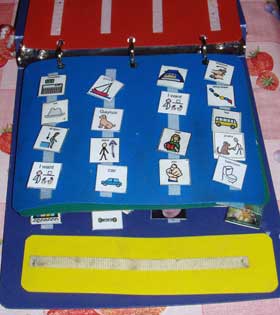Sensitive Issue
My daughter Siobhan is 20 years old and is non-vocal. She has never been left alone. Because of her cognitive deficits she needs assistance doing very basic things. Going to the bathroom is one of them. It is a sensitive issue for Siobhan. She doesn’t always take herself to the bathroom when she needs it and because she has little expressive language Siobhan is on a bathroom schedule. (She is, however, a successful communicator.) Siobhan doesn’t like being told to go to the bathroom. One of the best purchases we’ve ever made is a portable DVD player. “How would you like to pick out a DVD?” works like a charm. Giving her a drink often helps. She likes her own bathroom at home. There are very few public bathrooms she will tolerate.
On the morning of Saturday October 27, 2012 Siobhan was at Westside Special Olympics bowling here in Santa Monica, California. Lots of people participate, hardly any of them as profoundly disabled as Siobhan. After she bowls the first game she needs to be taken to the bathroom. There is only a short break between games, so timing is tight. Just after she bowled her last frame of the first game I asked her if she had to go to the bathroom. Time was already ticking, but it’s important that I offer her the option. She signed “yes” and shook her head “no.” Typical. I took her hand and started leading the way. If she resisted then I would honor that.
Men’s Or Women’s Toilets?
Siobhan came with me and then I had a decision to make. Should I take her to the men’s or women’s toilets? This bowling alley doesn’t have a community bathroom. Heck, just this year they installed a ramp down to the bowling lanes. I took her to the men’s room. I’ve been doing this her entire life. I’ve thought about it a great deal. And what I conclude is that if I enter a women’s bathroom there might be a problem. I know that when I take her to the men’s room no one has ever complained. Until Saturday October 27, 2012 at Special Olympics bowling.
Mystery Voice
With time running short until the next game we both made it into the accessible stall. I got the door closed, Siobhan sat down, I inserted the straw into an apple juice box and gave it to her. I was fumbling with the DVD player when I heard a woman’s voice. The words were garbled because the door leading to the bowling alley was open and the lane noise was very loud. I think that the door was open because the woman didn’t want to enter a men’s room. Just as I don’t want to enter a women’s room. What I thought I heard was “Is (unintelligible) in there?” I had checked on the way to the stall we were in and the bathroom was empty. So I said “No one here by that name.”
Potential For Upset
I wish I had gotten a look at the woman so I could have engaged her in conversation afterward but Siobhan was at a crucial point in her process. Now that she had her drink and was looking at the DVD player she could relax and be successful. This is a delicate moment, one that might be upset in many ways. One way was for me to open the stall door and start having a conversation with someone in another room. We were in the bathroom, and the woman was in the bowling alley. This is technically another room. This is bad, according to Siobhan. She gets visibly upset and cries out whenever there is a conversation where she can’t see both people. She doesn’t like it, so we try not to do it. This could definitely cause her to stop cooperating.
I thought that the interchange with the woman was over, that she was looking for someone else. I was wrong. She said something else, I said no one else was in the men’s room. Then I heard her say loudly “is that a girl in there?” Well, Siobhan is 20 years old, but I knew what she meant. I said “yes.” During this part of the exchange I was really hoping that Siobhan would not take umbrage, that she wouldn’t just fly off the toilet corkscrewing her pants up and trying to barge out of the stall without zipping up.
I’m Her Attendant
Then the woman said “you can’t have a girl in there, it’s the men’s room.” I said “I’m her attendant.” She said “a woman can take her.” I’m sorry, but someone who has not been trained to take Siobhan to the bathroom cannot take her. We have lost her toilet training more than once, sometimes for long periods of time, due to bad experiences with untrained care givers. I said “it’s alright, I’ve got it.” I just wanted her to go away. At that moment, despite all the hullabaloo, Siobhan eliminated. I wiped her, turned the DVD player off, got her clothes adjusted, and we left the stall. There was no one there. We washed hands and headed back for game 2. No one stopped us, or talked with me.
Ongoing Issue
This incident brings the bathroom gender question to the forefront, an ongoing issue for Siobhan and me. Back at Special Olympics bowling the following week I just didn’t take Siobhan to the bathroom between games. I asked her and she shook her head “no.” Sometimes repeating the question will get a different response so I asked her again. Still no. The following week Linda accompanied her to bowling. This week there was no bowling due to it being Thanksgiving holiday week. Next week I’ll be back there again. If you have stories or advice, please engage me in conversation on Twitter @blacktelephone.

 Out on the kitchen table is her
Out on the kitchen table is her